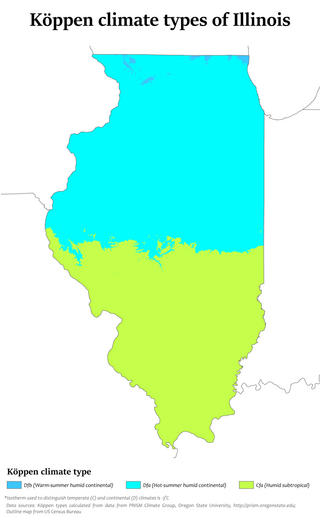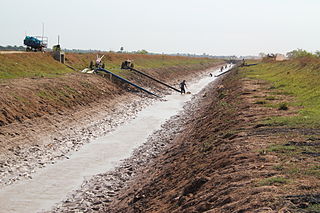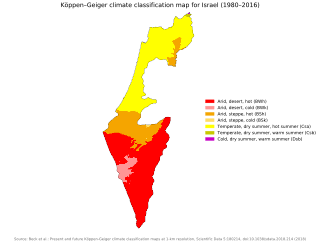
The Geography of Kenya is diverse, varying amongst its 47 counties. Kenya has a coastline on the Indian Ocean, which contains swamps of East African mangroves. Inland are broad plains and numerous hills. Kenya borders South Sudan to the northwest, Uganda to the west, Somalia to the east, Tanzania to the south, and Ethiopia to the north. Kenya currently faces border disputes with South Sudan over the Ilemi Triangle and with Somalia over Jubbaland where, if the Somalian Government gives it up, it could be a new part of Kenya, which would bring the total land area of Kenya to approximately 692,939 km2.

Climate change has serious impacts on the water resources in Jordan. The country needs to prepare for the impacts of climate change. Water resources in Jordan are scarce. Besides the rapid population growth, the impacts of climate change are likely to further exacerbate the problem. Temperatures will increase and the total annual precipitation is likely to decrease, however with a fair share of uncertainty. Hence, existing and new activities with the objective to minimize the gap between water supply and demand contribute to adapt Jordan to tomorrow's climate. This might be accompanied by activities improving Jordan's capacity to monitor and project meteorological and hydrological data and assess its own vulnerability to climate change.

Climate change in Africa is an increasingly serious threat as Africa is among the most vulnerable continents to the effects of climate change. Some sources even classify Africa as "the most vulnerable continent on Earth". Climate change and climate variability will likely reduce agricultural production, food security and water security. As a result, there will be negative consequences on people's lives and sustainable development in Africa.

Climate change is predicted to have significant effects on the living conditions in Argentina. The climate of Argentina is changing with regards to precipitation patterns and temperatures. The highest increases in the precipitation have occurred in the eastern parts of the country. The increase in precipitation has led to more variability in precipitation from year to year in the northern parts of the country, with a higher risk of prolonged droughts, disfavoring agriculture in these regions.

Climate change in Illinois encompasses the effects of climate change, attributed to man-made increases in atmospheric carbon dioxide, in the U.S. state of Illinois.

Cambodia is highly vulnerable to the effects of climate change. Extreme weather events will occur more frequently; this includes floods, which already affect 90,000 residents annually, and heatwaves, with Cambodia already having one of the highest temperatures of the world. The temperature has increased since the 1960s by 0.18 °C per decade. It had the 7th lowest CO2 emissions in Asia in 2019.

Climate change in Suriname is leading to warmer temperatures and more extreme weather events in Suriname. As a relatively poor country, its contributions to global climate change have been limited. Because of the large forest cover, the country has been running a carbon negative economy since 2014.

Climate change is causing Egypt’s already hot and arid climate to experience environmental stresses including extreme temperatures, droughts, floods, and sea level rise. These extreme conditions will have significant impacts on the lives of Egyptians resulting in food insecurity, water scarcity, and economic destabilization.

Climate change in Ghana is impacting the people in Ghana in several ways as the country sits at the intersection of three hydro-climatic zones. Changes in rainfall, weather conditions and sea-level rise will affect the salinity of coastal waters. This is expected to negatively affect both farming and fisheries.

Climate change in Tanzania is affecting the natural environment and residents of Tanzania. Temperatures in Tanzania are rising with a higher likelihood of intense rainfall events and of dry spells.

Climate change in Senegal will have wide reaching impacts on many aspects of life in Senegal. Climate change will cause an increase in average temperatures over west Africa by between 1.5 and 4 °C by mid-century, relative to 1986–2005. Projections of rainfall indicate an overall decrease in rainfall and an increase in intense mega-storm events over the Sahel. The sea level is expected to rise faster in West Africa than the global average. Although Senegal is currently not a major contributor to global greenhouse gas emissions, it is one of the countries most vulnerable to climate change.

Climate change is posing an increasing threat to global socio-economic development and environmental sustainability. Developing countries with low adaptive capacity and high vulnerability to the phenomenon are disproportionately affected. Climate change in Kenya is increasingly impacting the lives of Kenya's citizens and the environment. Climate Change has led to more frequent extreme weather events like droughts which last longer than usual, irregular and unpredictable rainfall, flooding and increasing temperatures.

Iran is among the most vulnerable countries to climate change in the Middle East and North Africa (MENA). Iran contributes to about 1.8% of global greenhouse gas emissions (GHG), and is ranked 8th in greenhouse gas emissions (GHG) world wide and is ranked first in the MENA region due to its reliance on oil and natural gas. Climate change has led to reduced precipitation as well as increased temperatures, with Iran holding the hottest temperature recorded in Asia.

India is ranked fourth among the list of countries most affected by climate change in 2015. India emits about 3 gigatonnes (Gt) CO2eq of greenhouse gases each year; about two and a half tons per person, which is less than the world average. The country emits 7% of global emissions, despite having 17% of the world population. Temperature rises on the Tibetan Plateau are causing Himalayan glaciers to retreat, threatening the flow rate of the Ganges, Brahmaputra, Yamuna and other major rivers. A 2007 World Wide Fund for Nature (WWF) report states that the Indus River may run dry for the same reason. Heat waves' frequency and intensity are increasing in India because of climate change. Severe landslides and floods are projected to become increasingly common in such states as Assam. The climate change performance index of India ranks eighth among 63 countries which account for 92% of all GHG emissions in the year 2021.

Climate change in the Middle East and North Africa (MENA) refers to changes in the climate of the MENA region and the subsequent response, adaption and mitigation strategies of countries in the region. In 2018, the MENA region emitted 3.2 billion tonnes of carbon dioxide and produced 8.7% of global greenhouse gas emissions (GHG) despite making up only 6% of the global population. These emissions are mostly from the energy sector, an integral component of many Middle Eastern and North African economies due to the extensive oil and natural gas reserves that are found within the region. The region of Middle East is one of the most vulnerable to climate change. The impacts include increase in drought conditions, aridity, heatwaves and sea level rise.

Israel, like many other countries in the Middle East and North Africa, experience adverse effects from climate change. Annual and mean temperatures are increasing in Israel, with mean temperature expected to increase between 1.6 and 1.8 °C by 2100. There is a reduction in annual precipitation and delayed winter rains. Israel is already experiencing droughts and water shortages. Heatwaves are other natural hazards expected to increase with climate change.

Climate change in Africa is reducing its food security. Climate change at the global, continental, and sub-continental levels has been observed to include an increase in air and ocean temperatures, sea-level rise, a decrease in snow and ice extent, an increase and decrease in precipitation, changes in terrestrial and marine biological systems, and ocean acidification. The agricultural industry is responsible for more than 60% of full time employment in Africa, millions of people in Africa depend on the agricultural industry for their economic well-being and means of subsistence. A variety of climate change-related factors such as worsening pests and diseases that damage agriculture and livestock, altered rainfall patterns, rising temperatures, droughts, and floods are having a negative impact on the agricultural industry in Africa. Many African populations access to food is being impacted by these climate effects on the agricultural industry, which result in a trend of decreasing crop yields, animal losses, and rising food prices.

Climate change is the consequence of long-term alterations in the Earth's climate caused by the emission of greenhouse gases such as carbon dioxide (CO2) and methane (CH4). These gases can trap heat in the atmosphere, resulting in global warming and a heightened temperature on our planet. The activities carried out by humans, such as the utilization of fossil fuels, along with large-scale commercial agriculture and deforestation, are accountable for the release of these greenhouse gases. The escalating temperatures and escalating extreme heat conditions, uncertain and progressively unpredictable precipitation, and extreme weather provoke new challenges and exacerbate existing ones.

Eswatini also known as Swaziland, a landlocked nation located in Southern Africa, is characterized by a subtropical climate that features wet and hot summers as well as cold and dry winters. The country has expressed concern regarding the impact of climate change on its existing social challenges, which include but are not limited to issues such as poverty, a high prevalence of HIV, and food insecurity. Furthermore, it is anticipated that climate change will significantly impede the country's development progress, by Vision 2022.

Malawi is a land-locked country in southeastern Africa situated along the southernmost arm of the East African Rift-Valley System between latitudes 9°22’ and 17°03’ south of the equator, and longitudes 33°40’ and 35°55’ east of the Greenwich meridian. It shares borders with Tanzania in the north and northeast, Mozambique in the southwest, south, and east, and Zambia in the west. Malawi is highly vulnerable to the effects of climate change as the vast majority of Malawians rely on small-scale, rain-fed agriculture, making them highly dependent on weather patterns. Climate change increasingly exacerbates droughts, flooding, and inconsistent rainfall—contributing to food insecurity and threatening to derail progress toward Malawi’s goal of self-reliance.





















